On this page
Books about CuckoosThis page lists books that are about, or partly about, cuckoos. The books are listed in order of publication date with the most recent at the top.
Cuckoos
Family: Cuculidae
In the UK:
Common Cuckoo
Cuculus canorus
Rare UK visitors:
Great-spotted Cuckoo
Clamator glandarius
Black-billed Cuckoo
Coccyzus erythropthalmus
Yellow-billed Cuckoo
Coccyzus americanus
Other cuckoos
There are approximately 145 species worldwide in the family Cuculidae. These include true cuckoos, thick-billed cuckoos, drongo-cuckoos, koels, the Yellowbill, malkohas, couas, ground cuckoos, roadrunners, coucals and anis.
|
|
|
|
The Cuckoo: The Uninvited GuestTomas Grim, Karl Schulze-Hagen, Bard G Stokke
Photographs: Oldrich Mikulica
Foreword: Nick Davies
Wild Nature Press
2017
"In this book the authors delve into the stories behind what we see, and into the complex and ever evolving evolutionary arms race by which the nest parasite and its hosts constantly try to leapfrog each other into prime position. The natural history of the cuckoo-host struggle is illuminated with detailed explanations of the results of behavioural and ecological research to provide a comprehensive, but highly readable, account in which an insight into one puzzle constantly reveals a new question begging an answer.The whole story is brought vividly to life through the astonishing photographs of Oldrich Mikulica, who has watched cuckoos and their various hosts from hides for almost four decades. The result is a unique and beautiful book which both informs and delights."
|
Buy from amazon.co.uk 
|
|
Cuckoo: Cheating by NatureNick Davies
Illustrations: James McCallum
Bloomsbury
2015
"In this enormously engaging book, naturalist and scientist Nick Davies reveals how cuckoos trick their hosts. Using shrewd detective skills and field experiments, he uncovers an evolutionary arms race, in which hosts evolve better defences against cuckoos and cuckoos, in turn, evolve novel forms of trickery. This is a fascinating corner of Darwin's 'entangled bank', where creatures are continually evolving to keep up with changes in their rivals. Lively field drawings by James McCallum, and remarkable photographs, show cuckoos in action: from the female cuckoo laying her beautifully disguised egg, to the cuckoo chick ejecting the host's eggs and young from the nest to ensure it gets the full attention of its foster parents. Cuckoo offers a new insight not only into the secret lives of these extraordinary birds, but also into how cheating evolves and thrives in the natural world."
|
Buy from amazon.co.uk 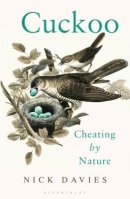
|
|
Cuckoos of the WorldJohannes Erritzøe, Clive F Mann, Frederik P Brammer, Richard A Fuller
Illustrations: Richard Allen, Jan Wilczur, Martin Woodcock, Tim Worfolk
Helm Identification Guides
Christopher Helm
2012
"Cuckoos of the World describes all 144 species of the Cuculidae in exceptional detail, with accurate range maps and superb illustrations by four world-renowned artists to show different plumages and subspecies. Despite many species being difficult to see well – often their presence is only revealed by vocalisations – photographs, many of a very high standard, of almost all species are also included, further aiding identification. Cuckoos of the World brings together not only personal field and museum research from the four authors, but information from a number of sources, including a comprehensive literature review. Our knowledge of these birds is far from complete, even in intensively studied species such as the common cuckoo, and much remains to be discovered. Cuckoos of the World represents the definitive reference on the identification of cuckoos. It is hoped that it will engender a wider interest in cuckoos and be a spur to future research."
|
Buy from amazon.co.uk 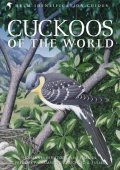
|
|
The Nesting Season: Cuckoos, Cuckolds, and the Invention of MonogamyBernd Heinrich
Harvard University Press / Belknap Press
2010
"Why are the eggs of the marsh wren deep brown, the winter wren's nearly white, and the gray catbird's a brilliant blue? And what in the DNA of a penduline tit makes the male weave a domed nest of fibers and the female line it with feathers, while the bird-of-paradise male builds no nest at all, and his bower-bird counterpart constructs an elaborate dwelling? These are typical questions that Bernd Heinrich pursues in the engaging style we've come to expect from him - supplemented here with his own stunning photographs and original watercolors. One of the world's great naturalists and nature writers, Heinrich shows us how the sensual beauty of birds can open our eyes to a hidden evolutionary process. Nesting, as Heinrich explores it here, encompasses what fascinates us most about birds - from their delightful songs and spectacular displays to their varied eggs and colorful plumage; from their sex roles and mating rituals to nest parasitism, infanticide, and predation. What moves birds to mate and parent their young in so many different ways is what interests Heinrich - and his insights into the nesting behavior of birds has more than a little to say about our own."
|
Buy from amazon.co.uk 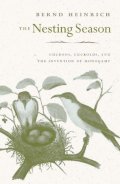
|
|
The CuckoosRobert B. Payne and Michael D. Sorensen
Colour plates: Karen Klitz
Oxford University Press
2005
644 pages, numerous colour plates, halftones, maps, and line figures
The most up-to-date and comprehensive study of this most fascinating family of birds. Contains much new and previously unpublished data, including a complete evolutionary tree of cuckoo species based on molecular genetics and a new analysis of species based on songs. Provides information on the breeding biology and life histories of all cuckoo species.
" In The Cuckoos , Robert B. Payne presents a new evolutionary history of the family based on molecular genetics, and uses the family tree to explore the origins and diversity of their behaviour. He traces details of the cuckoos' biology to their original sources, includes descriptions of previously unpublished field observations, and reveals new comparisons of songs showing previously overlooked cuckoo species. Lavishly illustrated with specially commissioned colour plates and numerous maps, halftones, and line drawings, The Cuckoos provides the most comprehensive and up-to-date account of this family yet available."
|
Buy from amazon.co.uk 
|
|
The Real RoadrunnerMartha Anne Maxon
University of Oklahoma Press
2005
"The roadrunner, an icon of the Southwest and one of the most beloved birds of the United States, is also one of the least understood. In The Real Roadrunner, Martha Anne Maxon offers the most thorough natural history of the greater roadrunner species to date, revealing how the adaptable nature of the bird has allowed it to survive throughout the centuries and even to thrive today, when many other bird species are in decline. In her portrait of the roadrunner, Maxon covers the basic features and behavioral patterns of this bird-lineage, anatomy, habitat, and range, as well as strategies for obtaining food, withstanding the elements, and avoiding predators, with special attention given to the courtship and nesting behaviors that occupy the species for three-quarters of the year. The author has assembled and analyzed information both from scientific and popular literature and from other researchers. This and her years of field observation and experience with raising young roadrunners in captivity have yielded new and intriguing facts on the species' courtship and nesting behavior and on the development of the young."
|
Buy from amazon.co.uk 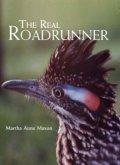
|
|
RoadrunnersLynn Hassler Kaufman
Rio Nuevo Publishers
2005
"Known for its speed, charisma, and impudence, the roadrunner has walked or run, his way into the hearts of millions. Yet the roadrunner is more than just a cartoon, hes a cuckoo! As member of the ground-dwelling cuckoo family, the roadrunners twiggy legs are powerful and can reach speeds of up to fifteen miles per hour. Birding expert, Lynn Kaufman gives us a new title for our Look West series. Roadrunners, is an introduction into the life of this independent and self-reliant creature."
|
Buy from amazon.co.uk 
|
|
The Roadrunner: Tenth Anniversary EditionWyman Meinzer
Texas Tech University Press
2003
"Meinzer's classic photostudy, first published in 1993, is a personal account of the years spent observing and recording the daily routine of several roadrunner families. Through his lens, he chronicled roadrunners' courting, mating, nesting, hunting, and rearing of young. This new edition includes a new preface from Meinzer and several new photographs, including 2 of a rare white roadrunner."
|
Buy from amazon.co.uk 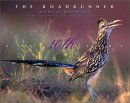
|
|
Cuckoos, Cowbirds and Other CheatsN.B. Davies
Illustrations: David Quinn
Poyser
2000
"In this fascinating new book, Nick Davies describes the natural histories of these brood parasites and examines many of the exciting questions they raise about the evolution of cheating and the arms race between parasites and their prey. Brood parasites fill their armory with adaptations including exquisite egg mimicry, rapid laying, ejection of host eggs, murder of host young, chick mimicry and manipulative begging behavior: ploys shown by recent research to have evolved in response to host defense behavior or through competition among the parasites themselves. While many host species appear defenseless, accepting parasite eggs quite unlike their own, many are more discriminating against odd-looking eggs and some have evolved the ability to discriminate against odd-looking chicks as well. How is this arms race conducted? Will defenseless hosts develop defenses in time, or are there constraints which limit the evolution and perfection of host defenses? And why are so few species obliged only to lay eggs in host nests? Have host defenses limited the success of brood parasitism, or is it in fact much more common than we suspect, but occurring mainly when birds parasitize the nest of their own kind? All of these puzzles are examined in descriptions of the natural history of each of the groups of parasites in turn. Here, is a book with wide appeal, both to amateur naturalists fascinated by this most singular and macabre of behaviors and to ornithologists and ecologists interested in the evolution of ecology and behavior. The story takes us from the classic field work earlier this century by pioneer ornithologists such as Edgar Chance, Stuart Baker, Herbert Friedmann and others, through to the recent experimental field work and molecular techniques of today's leading scientists. We visit brood parasites in Europe, Asia, Japan, Africa, Australasia, and North and South America, to look at some of the worlds most interesting birds and some of biology's most interesting questions, many of which still beg answers from ornithologists in the future."
|
Buy from amazon.co.uk 
|
|
Working Bibliography of Cuckoos and Turacos of the WorldJohannes Erritzoe and Oscar van Rootselaar
?
2000
A 400 page bibliography. Includes a CD-ROM containing the whole reference list for quick searching.
|
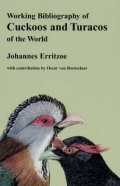 |
|
Parasitic Birds and Their Hosts: Studies in CoevolutionEditors: Stephen I. Rothstein & Scott K. Robinson
Oxford University Press
1999
"This book is the first to present a comprehensive overview of the diverse kinds of birds and interactions involved in avian brood parasitism. This phenomenon has attracted the interests of naturalists and evolutionists since Darwin, yet very few researchers applied modern evolutionary theory and experimental methods to the study of the adaptations for and against brood parasitism by parasitic birds and their hosts until 25 years ago. The amount of work being done on parasitic birds has grown at an accelerating rate in the last decade as numerous researchers have begun to pursue the study of these birds." Contents:
Preface; Dedication to Herbert Friedmann; Section 1 - Overview and Commentary; Stephen I. Rothstein and Scott K. Robinson: Ch. 1: The Evolution and Ecology of Brood Parasitism; Section 2 - Coevolution Between Cuckoos and Their Hosts; Nicholas N. Davies and Michael de L. Brooke: Ch. 2: Cuckoos Versus Hosts: Experimental Evidence for Coevolution; Hiroyoshi Higuchi: Ch. 3: Host Use and Egg Color of Japanese Cuckoos; Hiroshi Nakamura, Satoshi Kubota, and Reiko Suzuki: Ch. 4: Coevolution
Between the Common Cuckoo and Its Major Hosts in Japan: Stable Versus Dynamic Specialization on Hosts; Manuel Soler, Juan J. Soler, and Juan G. Martinez: Ch. 5: Duration of Sympatry and Coevolution Between the Great Spotted Cuckoo and its Primary Host, the Magpie; Luis Arias-de-Reyna: Ch. 6: Coevolution of the Great Spotted Cuckoo and its Hosts; Brian J. Gill: Ch. 7: Behavior and Ecology of the Shining Cuckoo Chrysococcyx lucidus; Robert B. Payne and Laura L. Payne: Ch. 8: Nestling
Eviction and Vocal Behavior in the Australian Glossy Cuckoos Chrysococcyx Basalis and C. lucidus; Section 3 - Coevolution Between Cowbirds and Their Hosts; Rosendo M. Fraga: Ch. 9: Interactions of the Parasitic Screaming and Shiny Cowbirds with a Shared Host, the Bay-winged Cowbird; Spencer G. Sealy, Diane L. Neudorf, Keith A. Hobson, and Sharon A. Gill: Ch. 10: Nest Defense by potential Hosts of the Brown-headed Cowbird: Methodological Approaches, Benefits of Defense, and Coevolution; Gustavo
H. Kattan: Ch. 11: Impact of Brood Parasitism: Why do House Wrens Accept Shiny Cowbird Eggs?; Section 4 - Models of Parasite-Host Coevolution: Equilibrium Versus Lag; Arnon Lotem and Hiroshi Nakamura: Ch. 12: Evolutionary Equilibria in Avian Brood Parasitism: An Alternative to the "Arms Race-Evolutionary Lag" Concept; Eivan Roskaft and Arne Moksnes: Ch. 13: Coevolution Between Brood Parasites and Their Hosts: An Optimality Theory Approach; Ian G. McLean and Richard F. Maloney: Ch. 14: Brood Parasitism, Recognition, and Response: The Options; Section 5 - Effects of Parasitism on Host Population Dynamics; Cheryl L. Trine, W. Douglas Robinson, and Scott K. Robinson: Ch. 15: Consequences of Brown-headed Cowbird Brood Parasitism for Host Population Dynamics; James N.M. Smith and Isla H. Myers-Smith: Ch. 16: Spatial Variation in Parasitism of Song Sparrows by Brown-headed Cowbirds; Alexander Cruz, William Post, Janes W. Wiley, Catherine P. Ortega, Tammie K. Nakamura, and John W. Prather: Ch. 17: Potential Impacts of Cowbird Range Expansion in Florida; Section 6 - Consequences of Parasitism for the Mating Systems and Life Histories of Brood Parasites; Phoebe Barnard: Ch. 18: Variability in the Mating Systems of Parasitic Birds; Section 7 - Conspecific Brood Parasitism; Michael D. Sorenson: Ch. 19: Patterns of Parasitic Egg Laying and Typical Nesting in Redhead and Canvasback Ducks; Harry W. Power: Ch. 20: Quality Cotrol and the Important Questions in Avian Conspecific Parasitism; Anders P. Moller: Ch. 21: Density-dependent Intraspecific Nest Parasitism and Anti-parasite Behavior in the Barn Swallow Hirundo Rustica; Wendy M. Jackson: Ch. 22: Egg-discrimination and Egg-color Variability in the Northern Masked Weaver: The Importance of Conspecific Versus Interspecific Parasitism; Section 8 - Major Unresolved Questions; Stephen I. Rothstein and Scott K. Robinson: Ch. 23: Major Unanswered Questions in the Study of Avian Brood Parasitism
|
Buy from amazon.co.uk 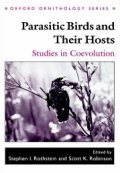
|
|
The Avian Brood Parasites: Deception at the NestPaul A. Johnsgard
Oxford University Press
1997
"The evolutionary, ecological and behavioral questions posed by obligate brood parasites are among the most intriguing of all contemporary ornithological topics. Avian brood parasites lay their eggs in the nests of other birds and may be a major contributing factor driving several species of songbirds to near extinction. As one of the first books to present a comprehensive overview of this fascinating phenomenon, this work discusses the comparative biology and co-evolutionary adaptations exhibited by the five families of birds that engage in such behavior. Several chapters dealing with the comparative biology of both intraspecific and interspecific brood parasites, are followed by individual accounts of all known species - nearly 100 altogether, primarily cowbirds and cuckoos. Some of the more remarkable behavioral and structural adaptations of these birds include egg mimicry, juvenile mimicry, elimination by starvation or actual attack of other nestlings or host eggs, and even the learning and partial mimicry of host song traits. An extended glossary, a list of Latin names, 400 literature citations and range maps of all parasitic species discussed are also included. Detailed line drawings by the author enhance this synthesis of biological and ecological information."
Includes a section on Honeyguides which discusses 17 species. |
Buy from amazon.co.uk 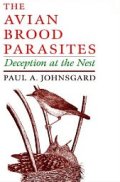
|
|
Cuckoos, Nightbirds and Kingfishers of AustraliaEditor: Ronald Strahan
Birds Of Australia series
The National Photographic index of Australian Wildlife
Angus & Robertson
1994
"This volume includes some non-passerine families: cuckoos, owls, frogmouths, nightjars, owlet nightjars, swifts, kingfishers, and bee-eaters; and some passerine families: pittas, lyrebirds, scrub-birds, larks, swallows, pipits, wagtails, cuckooshrikes, trillers and bulbuls. Full descriptions are accompanied by colour photographs and distribution maps."
|
Buy from amazon.co.uk 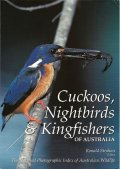
|
|
The RoadrunnerWyman Meinzer
Texas Tech University Press
1993
"The lifestyle of the roadrunner is vividly documented in this one-of-a-kind book. Wyman Meinzer's photographs and text provide a personal account of the years he spent observing the daily routine of several roadrunner families as the birds courted, mated, nested, reared their young, and hunted for food."
|
Buy from amazon.co.uk 
|
|
The CuckooIan Wyllie
Shire Natural History (No. 23)
1987
This book describes the lifestyle of the Cuckoo and the adaptations it has made to suit its parasitic breeding strategy.
|
Buy from amazon.co.uk 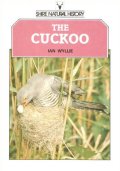
|
|
The Doves, Parrots, Louries and Cuckoos of Southern AfricaM.K. Rowan
Illustration: Graeme Arnott
David Phillip
1983
|
Buy from amazon.co.uk 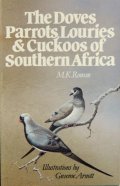
|
|
The CuckooIan Wyllie
Batsford
1981
A study of the cuckoo throughout the world. An introductory section describes the classification, distribution and general characteristics of the cuckoo family. There is a detailed study of the Common Cuckoo of Europe (Cuculus canorus) which includes information on appearance and identification, migration, food and feeding behaviour, song and calls, social system, hosts in Britain and elsewhere, egg laying and development of the young.
|
Buy from amazon.co.uk 
|
|
The Evolutionary History of the Avian Genus ChrysococcyxHerbert Friedmann
Bulletin 265
Smithsonian Institution, United States National Museum
1968
A 137 page study.
|
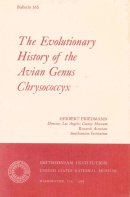 |
|
The Evolutionary Trends in the Avian Genus ClamatorHerbert Friedmann
Smithsonian Miscellaneous Collections Vol 146
Smithsonian Institution
1964
A 125 page study focussing on four species of cuckoos.
|
Buy from amazon.co.uk 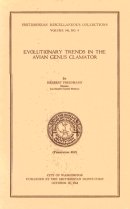
|
|
Bird Study, Volume 10, Issue 41963
Main articles:
- Cuckoo hosts in England - David Lack
- Whooper Swans at Loch Park, Banffshire, 1955–61 - Raymond Hewson
- The Lesser Black-backed Gull in Derbyshire - Michael Rayner
- Grey and fawn variant plumages - C. J. O. Harrison
|
 |
|
Fleas, Flukes and Cuckoos: A Study Of Bird ParasitesMiriam Rothschild and T. Clay
Collins
The New Naturalist Monograph 7
1952
A 304 page study of bird parasites. Includes 99 black and white photographs, 4 maps and 22 drawings.
|
Buy from amazon.co.uk 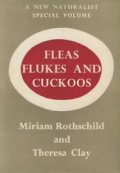
|
|
The Parasitic Cuckoos Of AfricaHerbert Friedmann
Academy of Sciences, Monograph No. 1
1948
|
 |
|
The Cuckoo And Other Bird MysteriesBernard Acworth
Eyre & Spottiswoode
1944
|
Buy from amazon.co.uk 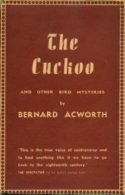
|
|
The Early Life Of The Young CuckooW. Percival Westell
Thomas Burleigh
1902
Open lines: "The Cuckoo has always been the subject of considerable controversy and debate, and with all our wonderful strides in the Scientific world we have as yet failed to solve many of the mysteries which surround its life and habits. With all our years of careful and patient observation we have not yet fathomed the mystery of why the Cuckoo does not build a nest of its own, and as to how many eggs one female lays during a season True, we have by this time exploded the altogether erroneous statement that the bird lays its eggs in the nest of the species with which it had decided to entrust its offspring, as it is now proved beyond a doubt that the bird does not lay the egg in the nest nor does it carry the egg in its claws, but first lays the egg on the ground and carries it to the selected nest in its mouth."
|

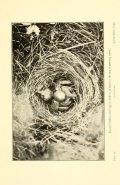 |
|
Our Common Cuckoo: And Other Cuckoos And Parasitical BirdsAlexander H. Japp
Thomas Burleigh
1899
From the preface: "All the district round a little house in the country, to which I removed from London, now getting on to twenty years ago, abounds with cuckoos, as well as with nightingales. I was thus led to pay more attention than I had before done to both these birds and to two others, to which I do not here at all refer. I have lain half-days in woods and coppices to watch and observe as best I could the ways of the cuckoos, and in doing this I could not help seeing other things; and sometimes I have been so struck with what I have seen that I became very anxious to know in how far other observers had witnessed the same or similar occurrences. This led me on and on, in a wide track of reading and inquiry, till I found myself launched on a piece of big and rather difficult research about the various different cuckoos in Europe and further afield, and even about other parasitical birds. I was constantly forced on attempts at comparative survey, and the endeavour to form sufficing theories, based on rational explanations of habit, or, at all events, working hypotheses. Some of the results of these endeavours are presented in this volume, which, if it has no other value, may claim this: that it describes, as far as I can, observations and enquiries undertaken with a desire for knowledge only, and to satisfy myself, and with no notion of writing a book."
|

 |
|
Cuckoos And Shrikes In Relation To Agriculture
The Food Of Cuckoos: F.E.L. Beal
The Food Of Shrikes: Sylvester D. Judd
Illustrations: J.L. Ridgway
Division Of Ornithology And Mammology Bulletin No. 9
US Department of Agriculture
Government Printing Office
1898
From the opening lines of the Shrikes section: Two species of shrikes inhabit North America. One, the loggerhead shrike (Lanius ludovicianus et subspec), is a permanent resident in the United States; the other, the butcherbird [Lanius borealis), visits us from the north in winter. Either might be mistaken for a mocking bird, but upon close inspection is seen to have the hooked beak of a hawk; instead of possessing talons, however, it has weak and slender feet, thus combining characters of a bird of prey with those of a song bird. During cold weather the shrike in wait for prey takes his stand on some high perch that commands a wide view. In this position he watches, ready to pounce on the first bird that twitters in the briers, or mouse that rustles in the grass. When the quarry has been secured, it is carried to a sharp twig or thorn and spitted, and then the hunter, ever eager to satisfy its desire for the chase, goes off to the hedgerows to search for more game.
|

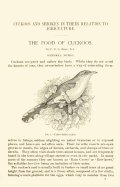 |
|
Catalogue Of The Picariae In The Collection Of The British MuseumCatalogue Of The Birds In The British Museum, Volume XIX
Scansores and Coccyges: P.L. Sclater
Indicatoridae, Capitonidae, Cuculidae and Musophagidae: G.E. Shelley
Colour plates: J. Smit (4), J.G. Keulemans (9)
Printed By Order Of The Trustees
Sold by: Longman & Co.; B. Quaritch; Kegan Paul, Trench, Trubner & Co.; and at the British Museum (Natural History)
1891
From the preface: "The present volume contains an account of the remaining families of the suborder Scansores, and of those of the suborder Coccyges. The arrangement of three of these families, which are entirely composed of Neotropical forms, was undertaken by Mr. P. L, Sclater, that of the remainder by Captain G. E. Shelley. The numbers of species of the several families, and of the specimens at present in the Collection of the British Museum, are as follows: Indicatoridae, 12; Capitonidae, 112; Rhamphastidae, 59; Galbulidae, 21; Bucconidae, 43; Cuculidae, 176; Musophagidae, 25. Of the 448 species recorded, 32 are not represented in the Museum; but besides the 73 types of species admitted as valid, the Collection contains 50 other typical specimens the names of which are now relegated to the synonymic lists. Of donations not already mentioned on former occasions, I have to refer to the two following, which were specially useful in supplementing the series of specimens catalogued in the present volume: the entire collection of Cuckoos formed by Mr. H. Seebohm, and consisting of 539 specimens; and a valuable series of South-African birds collected by T. and W. Ayres in Natal and the Transvaal for the late Mr. J. H. Gurney, and presented by his son."
|
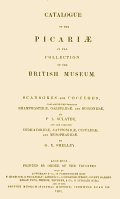
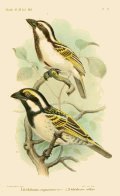
 |
|